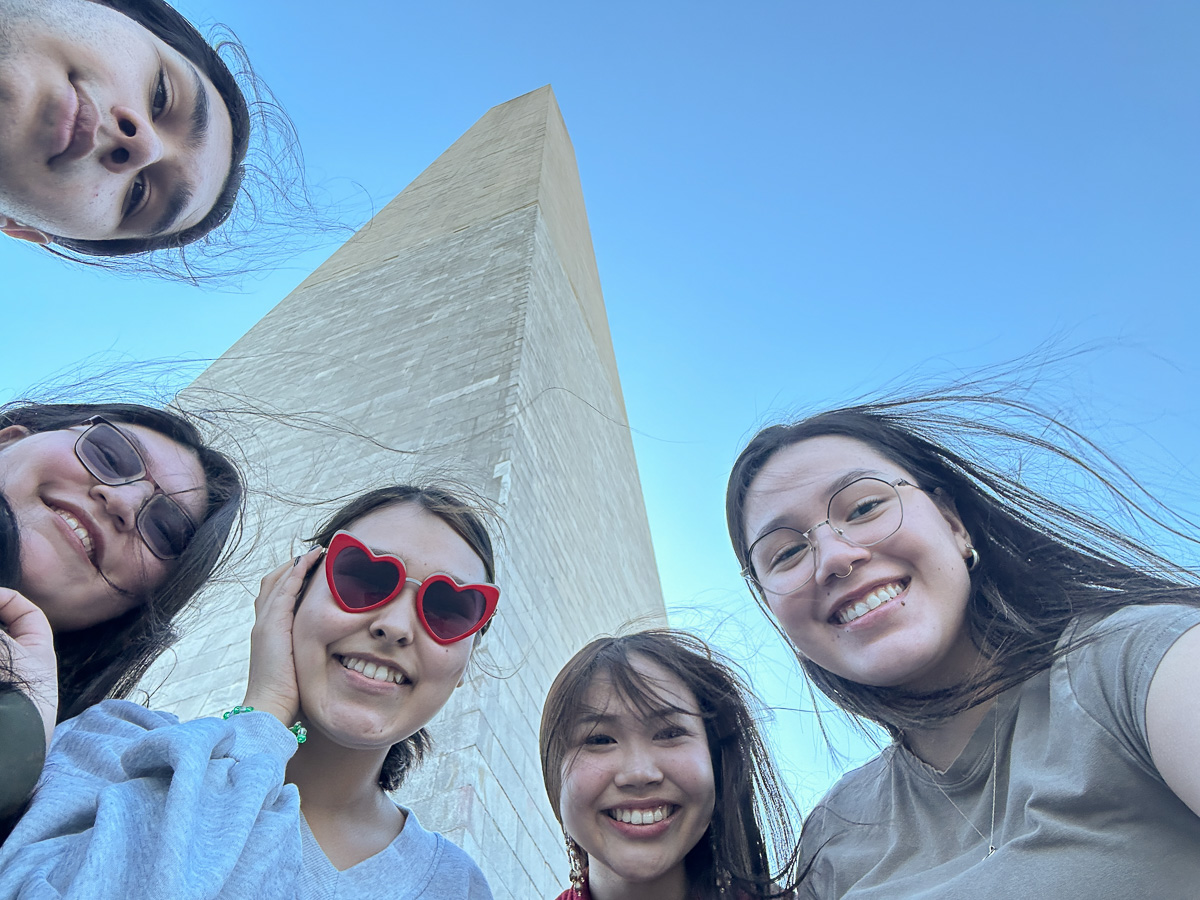
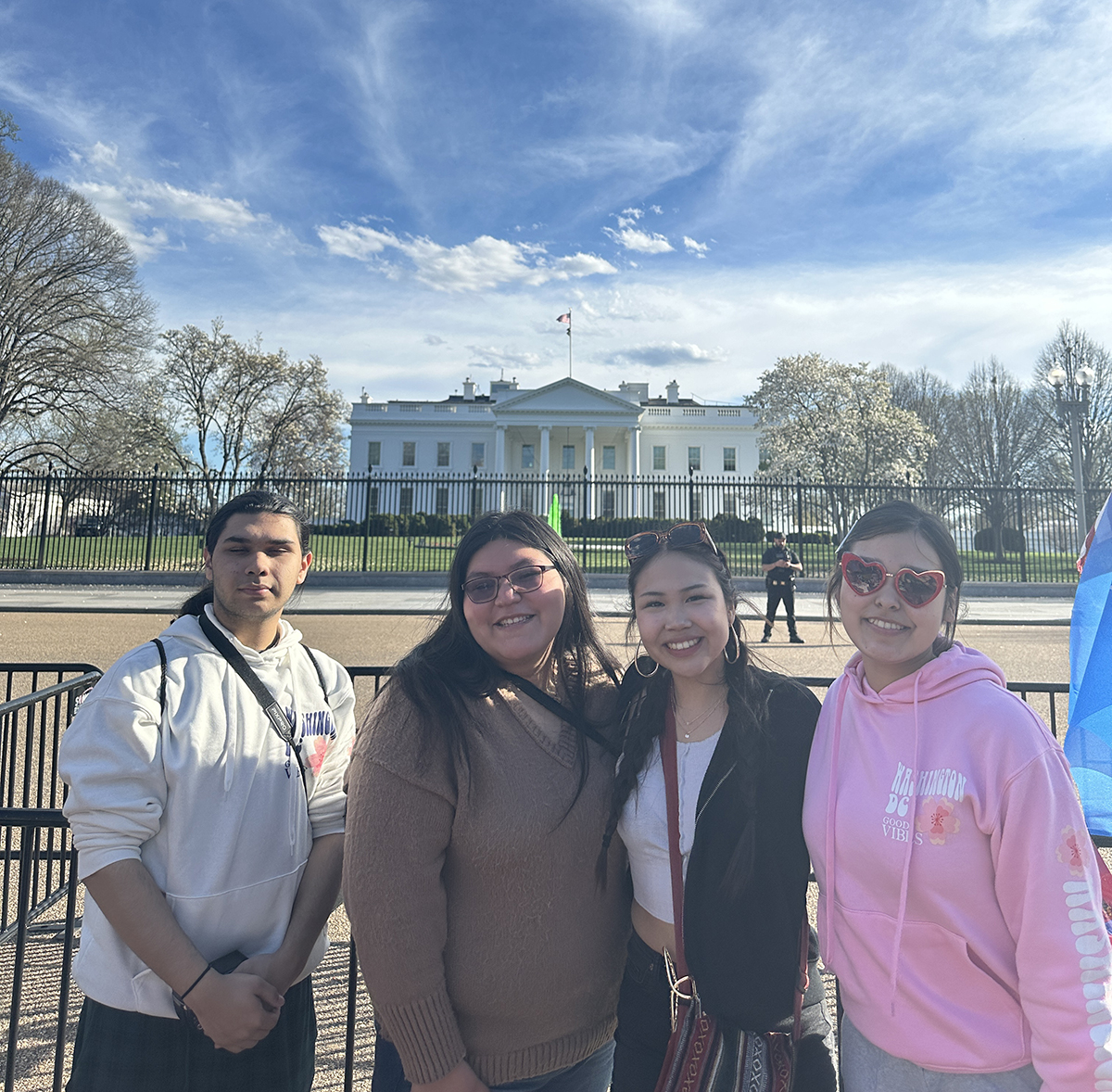
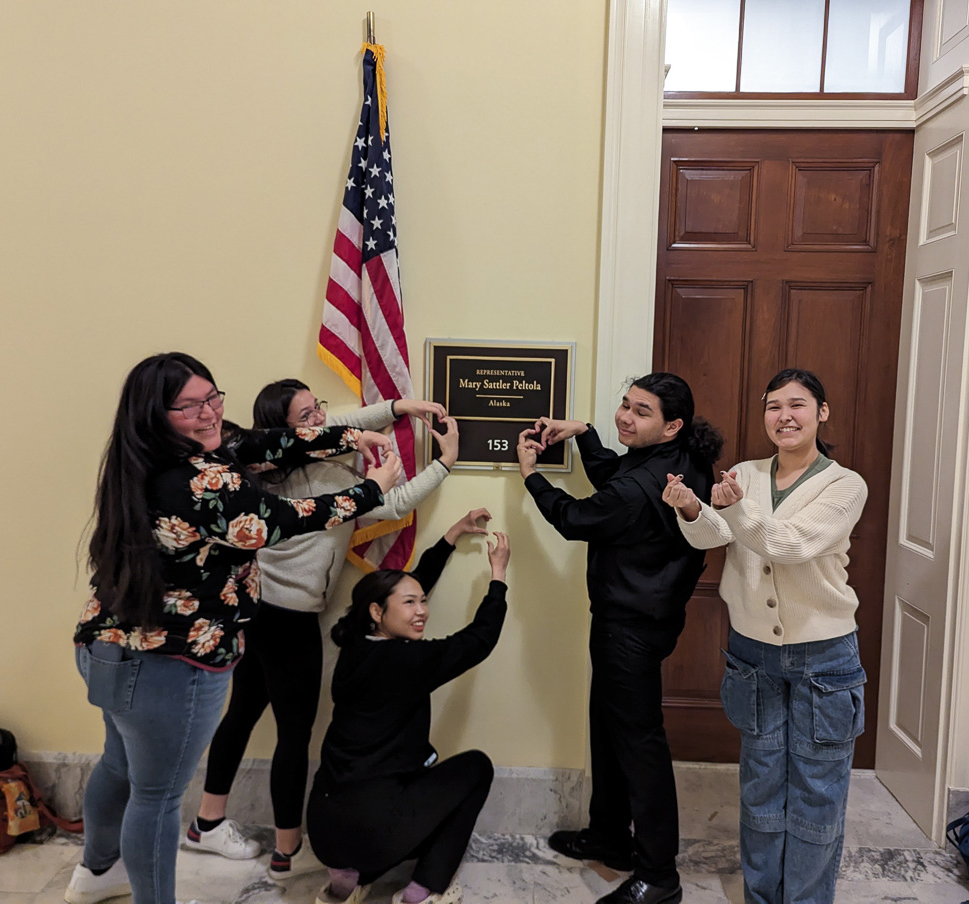
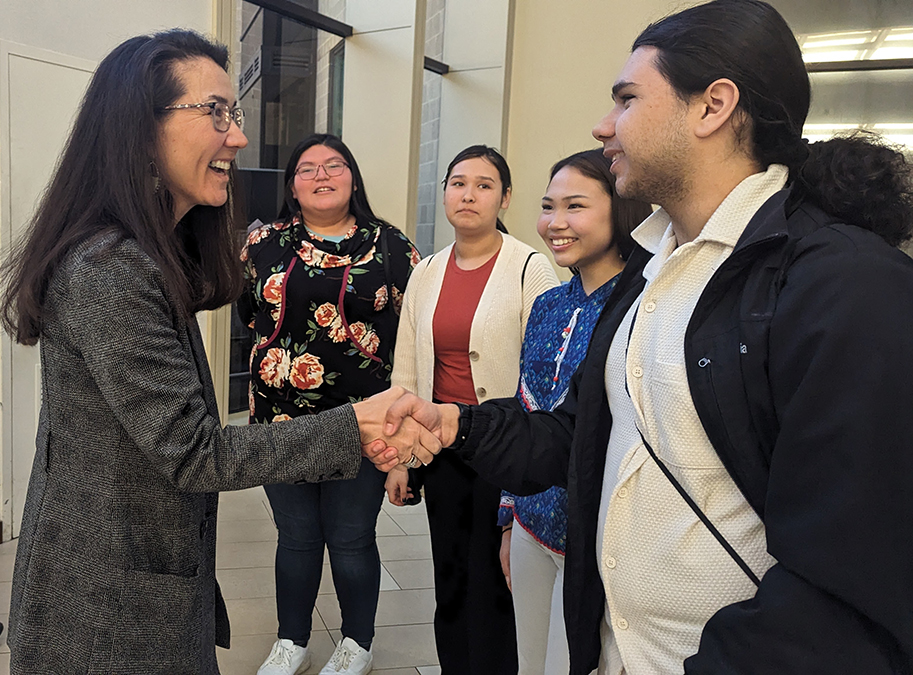
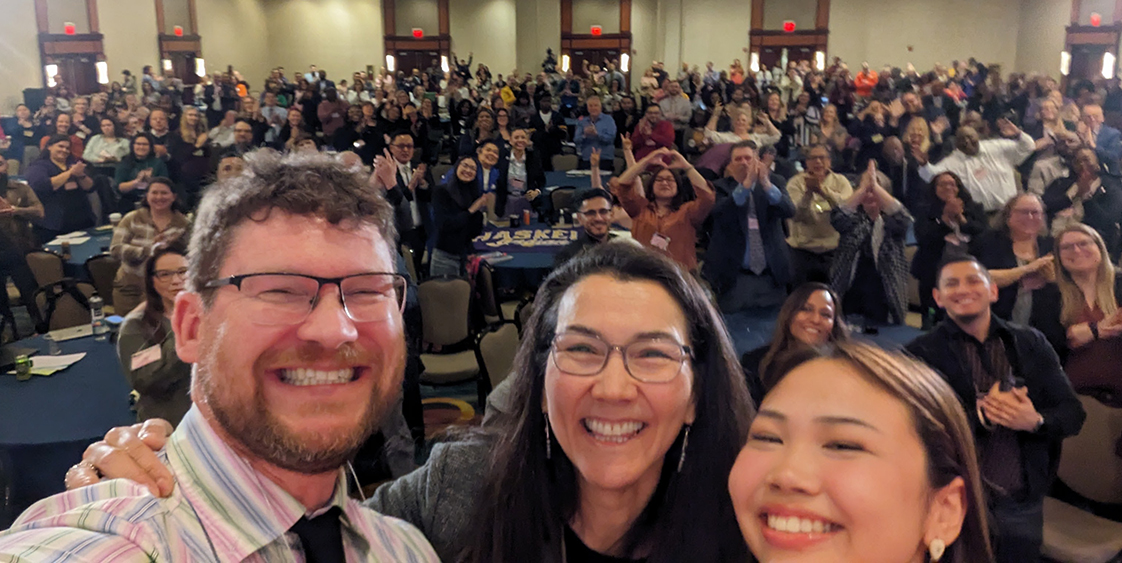
Early in 2024, U.S. Representative Mary Peltola, the first Alaska Native woman elected to Congress, toured the new Makerspace classroom at North Pole High. She extended a casual invitation to students that, should they find themselves in Washington, D.C., they should drop by her office. A few months later, that exchange led a group of the Alaska Earthquake Center’s Earth Observation Club students to Peltola’s office in the capital. The students covered a lot of ground in their six-day visit, touring college campuses, Capitol Hill, and museums, and giving a formal presentation. They even got to introduce Peltola’s speech, “What D.C. Can Learn from Alaska,” at the 2024 Council for Opportunity in Education seminar.
The Earth Observation Club (EarthObs), a T3 Alaska school club offering, is an after-school program hosted by 15 rural high schools across Alaska. Our aim is to train students to use remote monitoring tools to identify and troubleshoot community problems. The students tune in to weekly after-school Zoom meetings, where they are introduced to education-grade instruments that mirror what is hosted at Earthquake Center stations—a seismometer, GPS receiver, weather station, soil-temperature probe, air-quality sensor, and web camera. Each school group writes a proposal about how they will use some of these tools, and at the end of the school year, they gather in person to present their work at a professional meeting.
Inspired by a recent college tour with his own high school daughter, T3 Alaska program director Adam Low offered four promising EarthObs students the opportunity to visit D.C., meet Peltola in person, and tour college campuses far from home. The visit coincided with the seminar, and also set up the students to present their projects to Office of Naval Research and National Science Foundation leadership. “These are really rock-star students,” Low says of the group.
Timothy Garcia from Wrangell, a junior at Mt. Edgecumbe High School in Sitka, has been working with the U.S. Forest Service to map remote cabins and trails and to design and install a remote viewing system at Anan Wildlife Observatory Site.
Layla Workman, a sophomore at North Pole High, programmed an earthquake alarm system, and helps teachers at her school learn how to use their new makerspace.
Audrey Cleveland, a junior at Kuinerrarmiut Elitnaurviat school in Quinhagak, is using soil-temperature sensors to track permafrost degradation that is causing building damage in her town. She attends local council meetings, and spoke at the 2023 Alaska Federation of Natives convention on the climate change issues impacting her community.
Sydney Lincoln, a junior from Peltola’s hometown of Bethel, has been working with EarthObs to rig a flood warning system that could alert people during spring breakup. With an interest in digital storytelling, Lincoln is part of the “Ask an Elder” program that records stories and advice for younger generations. She is also a Native Youth Olympics competitor in seal hop and one-hand reach.
Student chaperone Sarah Stenek, who grew up in Shishmaref and is now a Geosciences major at the University of Alaska Fairbanks and a T3 outreach specialist, knows exactly what it’s like to be a prospective college student from a small Alaskan community. “Being in Alaska, you’re thinking of local school,” she says, “but it was a great chance for the students to see the opportunities in D.C., like internships and grants that can fully cover their college tuition.” The college campus tour, which included American University and George Washington University, was particularly effective. Lincoln described being able to see herself at American University, particularly because of their pre-college transition program, “that seems supportive if I went to college that far away.”
For Lincoln and Stenek, the standout highlight of the trip was meeting Peltola. “A big thing for me is when someone important in politics asks directly, ‘What can I do to help?’,” says Stenek, “that they give the time to listen to students during their busy day.”
Lincoln was asked to introduce Peltola at the education seminar. She says, “I was nervous about meeting her, but after I met her I felt calm, because she’s from my hometown and I felt very connected with her, and her speaking Yup’ik with me felt special.” Walking into the room of 600 attendees, Lincoln felt nervous, but her fellow students helped her feel more confident.
“The amount of love and support coming from our students toward each other was uplifting,” says Low. He describes this kind of opportunity as having a ripple effect back home. “All EarthObs students got updates from the trip, and that sharing elevated the students back home in Alaska, knowing these options are out there for them.”
The trip wasn’t all business. Other student highlights included an impromptu late-night McDonald’s snack in front of the Washington Monument, and scootering around the city. “It was my first time in D.C.,” says Lincoln. “It felt like home, but at a different place. I thought it was very beautiful, and I plan on going there again someday.”




